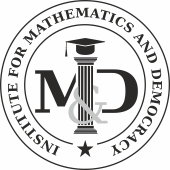Summary of 2020 Summer Activities
- Combinatorial topology and political coalition structures
- Representation theory and voting
- Analysis of power indices with forbidden coalitions
- Unicef poverty data and topological data analysis
- Spread of coronavirus and topological data analysis
Here are a few highlights.
Yiran Chen ’21 produced visualizations of the U.S. COVID-19 data using Mapper graphs to easily observe and compare the gradual spread of the pandemic across time and space. This unique way of visualizing COVID-19 captures various nuances and conveys its spread in the U.S. in a novel way. You can read more about it in this paper: https://arxiv.org/abs/
Annette Belleman ‘23, Helen Chen ‘23, Tantan Dai ‘22, Guadalupe Portillo Deras ‘21, and Jingmiao Zhao ‘23 examined the behavior of positional counting (Borda Count) and pairwise ranking (Condorcet) methods using linear algebra, group theory, and representation theory to study the possible outcome profiles of elections. Their work consisted of three different parts: counting the inconsistencies that arise between Borda Count and Condorcet results, the decomposition of profiles with multiple candidates in an election, and the results of young tableaux multiplication. You can read more about this research here.
Andrea Mock ’22 studied how political structures (coalitions and conflicts among agents such as political parties) can be modeled by simplicial complexes. She is using homology to develop invariants that describe when certain types of coalitions are possible and when power can be delegated. Andrea will continue this work in the fall.
Cece Henderson ’23 examined the evolution of mathematical language in political speeches over the last few decades. She wrote a program that counted the number of certain types of words in hundreds of political speeches in order to quantify the changing relationship between mathematics and politics. In addition to looking at presidential speeches, she also did state-level analysis of governor speeches and will continue to correlate her findings to education trends, especially in STEM fields.



